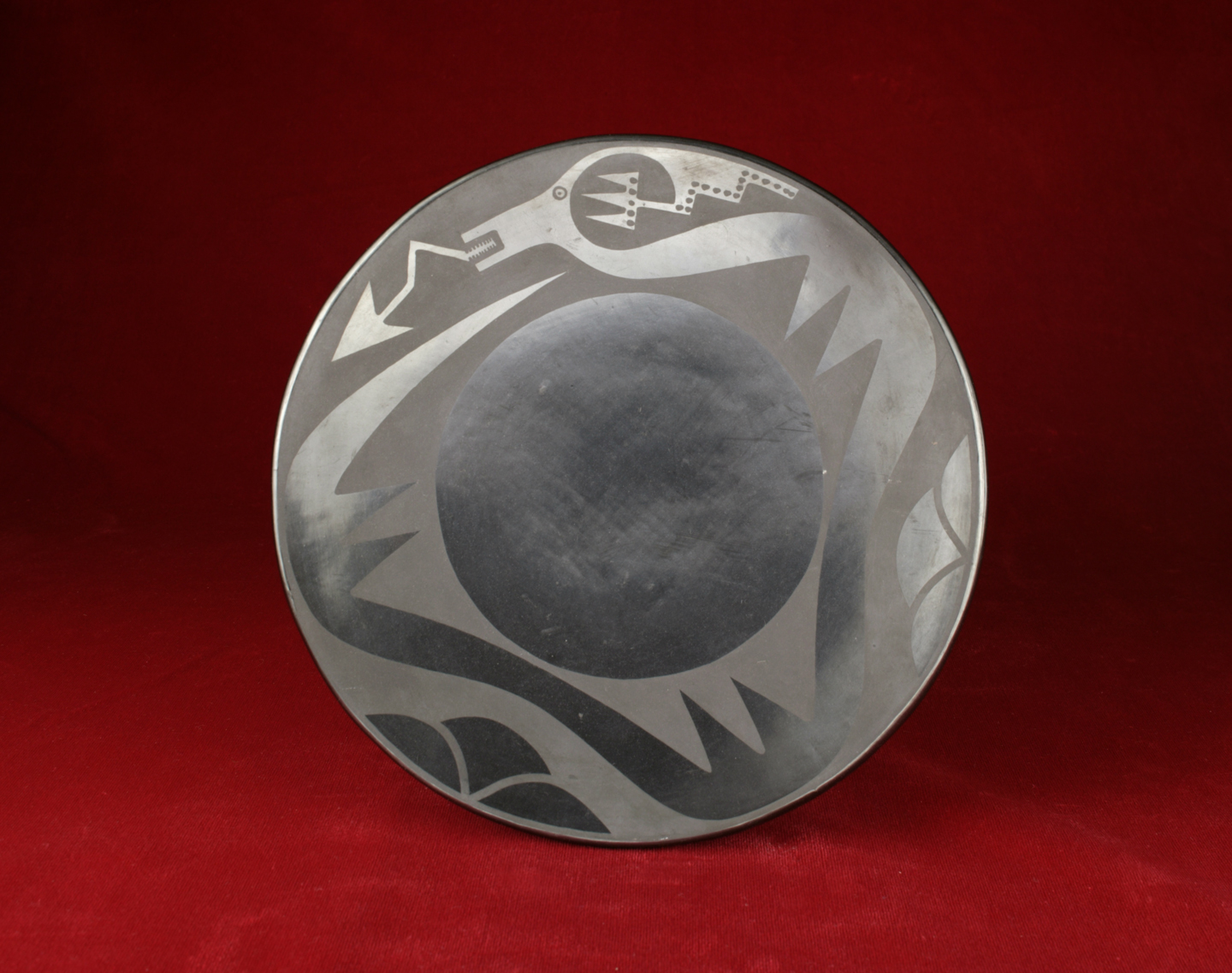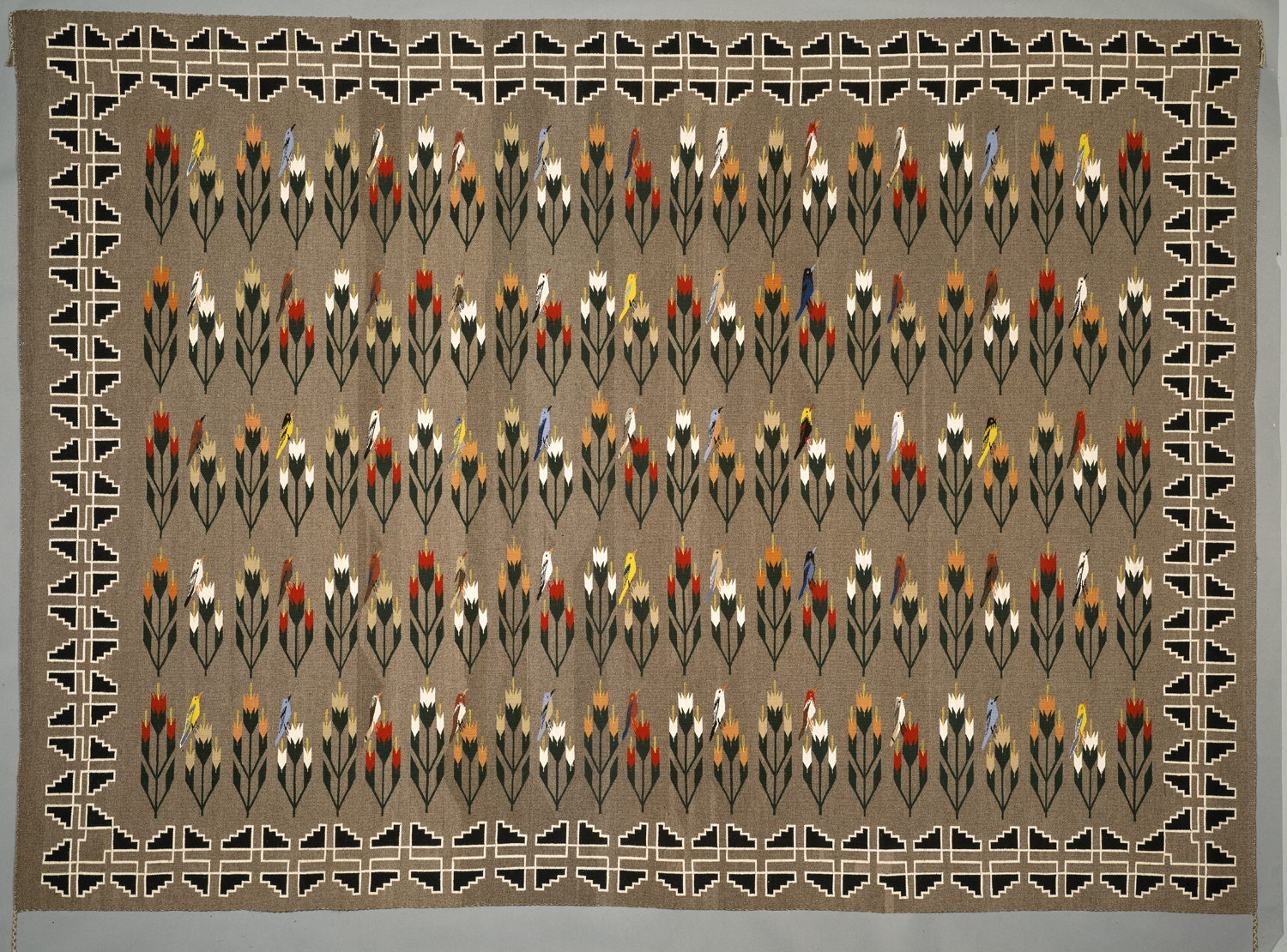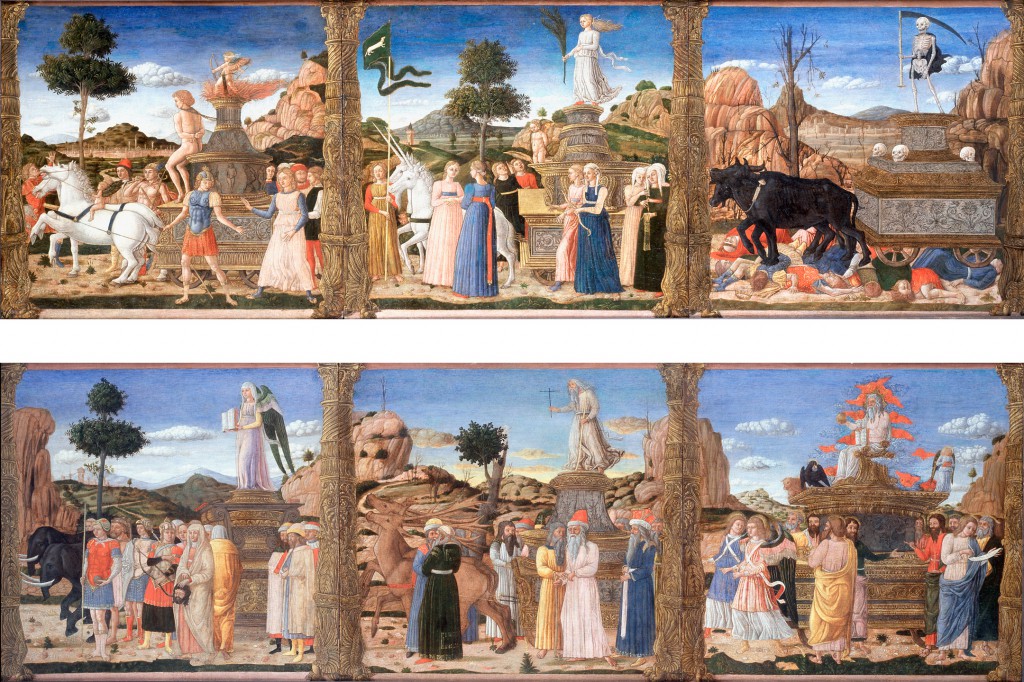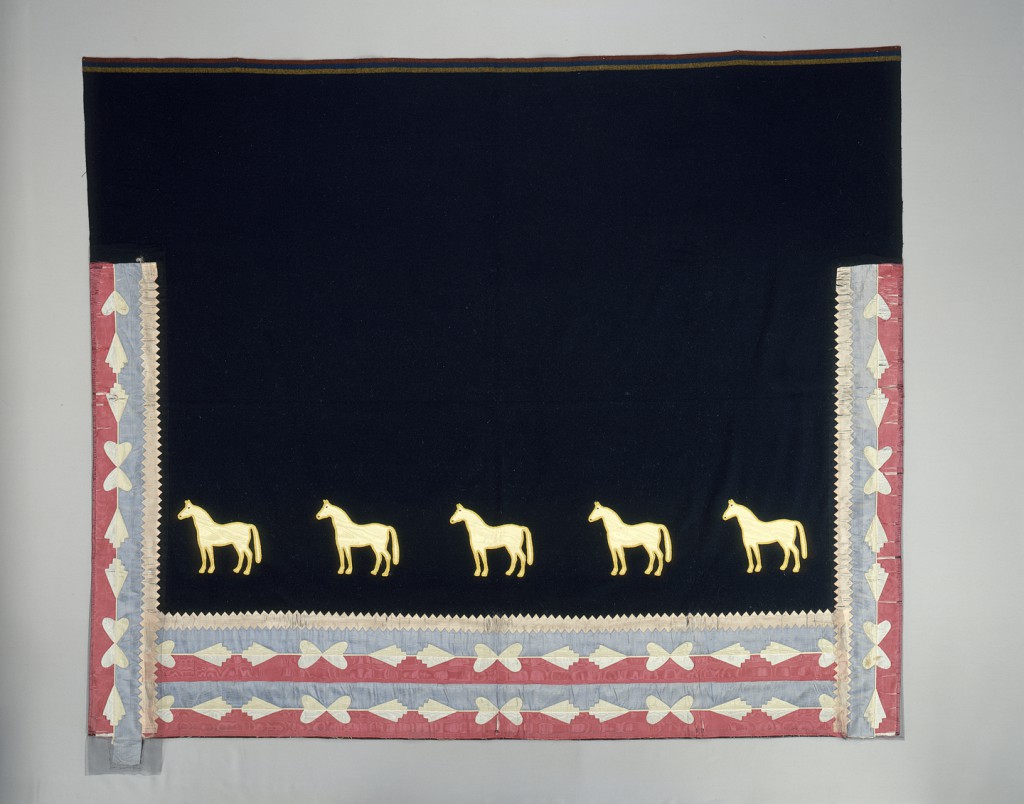Students will analyze the plate made by members of the Martinez family and learn how they collaborated with each other to create art. Students will work in conjunction with a partner to create a piece of art or literature.
Students will be able to:
- analyze the plate created by the Martinez family;
- explain how members of the Martinez family created art in a collaborative manner; and
- work collaboratively in pairs to create a piece of art or literature.
Lesson
Day 1
- Warm-up: Have students work together in groups of four to create a sentence-by-sentence story. Make sure each student has a piece of paper and something to write with. Students can begin writing freely, or you can give them specific guidelines such as creating a mystery or beginning with the phrase “Once upon a time.” Each student will write a first sentence, then pass the paper clockwise to the next person who will write the second sentence, and so on. Continue this process for several minutes, then tell students to bring their stories to a conclusion. Pass each paper back to the original author. Ask students to read the stories and reflect on the writing process. Did the stories turn out the way the students thought they would?
- Display the image of Maria and Julian Martinez’s Plate. Have students take a good, long look at it and describe what they see.
- Discuss how Maria and her husband Julian worked together to create amazing pieces of pottery. Ask students to analyze the qualities of both the plate, made by Maria, and the serpent painting on the plate, done by Julian.
- Have students pair up and brainstorm what their respective artistic strengths are. For example, one person might be able to create a clay object while the other person could decorate it, or one person could paint a natural background and another person could paint human figures on the same canvas.
- Another option: this collaborative approach could also be expanded into literacy. Once again, have students pair up and determine what their respective strengths are. The first student could write a creative piece while the other person could edit the work, or one student might write a children’s story while the other creates illustrations.
- End the lesson with the students deciding how they will collaborate on the project they will work on during the next lesson.
Day 2
- Display Maria and Julian Martinez’s Plate for everyone to see. Do the students see anything they may have missed the day before? Encourage the students to reference this work of art and think of the teamwork needed to create this plate when working on their projects.
- Have the students get together with their partner from the lesson before to work on their projects. Let students choose the supplies they need from the available materials and begin working.
- As the students are working, walk around the room to make sure both students are contributing to the project.
- At the end of the lesson, ask students: Was it difficult/easy to work with a partner on a creative project? How so? Did you learn anything from your partner? How does your partner express his/her creativity? How does that differ from how you express your creativity? Did the project turn out how you both wanted it to?
Materials
- Lined paper and pen/pencil for each student
- Art supplies for assorted projects
- About the Art section on Maria and Julian Martinez’s Plate (included with the lesson plan) or student access to this part of Creativity Resource online
- One color copy of the plate for every four students, or the ability to project the image onto a wall or screen
Standards
- Visual Arts
- Invent and Discover to Create
- Observe and Learn to Comprehend
- Relate and Connect to Transfer
- Envision and Critique to Reflect
- Language Arts
- Oral Expression and Listening
- Writing and Composition
- Collaboration
- Critical Thinking & Reasoning
- Information Literacy
- Invention
- Self-Direction
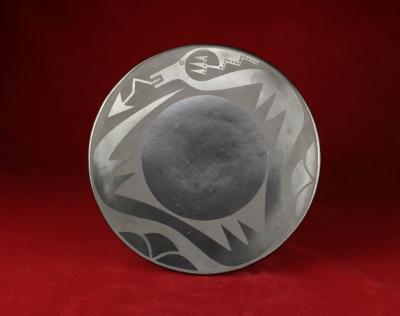
Plate
Diameter: 9.75 in.
Gift of Frederic H. Douglas, 1954.457
Photograph © Denver Art Museum 2009. All Rights Reserved.
Maria Martinez is probably the most famous American Indian artist of the twentieth century. She was born in the late 1870s and produced pottery for over eighty-five years until her death in 1980. She learned the art of pottery-making from her aunt, Nicolasa Peña. Maria and her husband Julian created the first black-on-black pottery, of which this plate is an example, in the early 1900s. In Pueblo tradition women shaped and polished the pots, while men were responsible for painting the surface with designs. Maria and Julian worked within this convention.
Maria and Julian lived in San Ildefonso [ILL-day-FON-so] Pueblo, near Santa Fe, New Mexico. Their innovative methods and designs shaped a new tradition for San Ildefonso pottery and influenced many artists both within and outside the American Indian community. The black-on-black pottery was so popular with collectors that Maria began teaching the firing technique to others, and by the mid 1920s nearly all San Ildefonso potters were making black ware. Maria also shared her skills with her children and grandchildren, and many of her descendents carry on her legacy today through their own pottery.
Maria and Julian began producing black pottery after an archaeologist asked them to recreate whole pots based on pieces of pottery that were found in the ruins of ancestral Pueblo homes. The couple experimented with various methods of firing the pottery and eventually achieved the black color by blocking oxygen from the pottery as it was fired. After discovering this technique, Maria and Julian continued to improve upon their pottery. Maria became extremely skilled at creating beautiful forms and achieving a smooth, glossy surface. Julian painted designs on the pottery after it was polished. He used a fine clay slip (a mixture of clay and water), which resulted in matte areas that provided a contrast to the highly polished background. In the beginning Maria was quite skeptical that black pottery was a part of her heritage. Until she finally acquiesced, she hid pottery she and Julian were making underneath the bed.
Drawing upon their heritage, Maria and Julian decorated their pottery with traditional Tewa [TAY-wah] designs. The design on this plate is an avanyu [ah-VON-you], a horned water serpent. The jagged line that comes out of the serpent’s mouth represents lightning, and the curves of its body symbolize flowing water. According to Santana, Maria and Julian’s daughter-in-law, Julian was the first painter at San Ildefonso Pueblo to use the avanyu decoration. “I think he got it from paintings on old pottery from the ruins,” she says. “Julian was a real artist, a real painter. He used to fill little notebooks with ideas for designs—he carried it wherever he went.”
Details
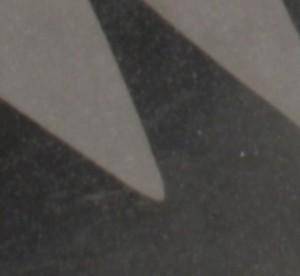
Black-on-Black
Maria and Julian produced their first black-on-black decorated piece in 1919. This technique brought the couple worldwide acclaim, though they had been producing pottery for years prior to this time. The pottery is buried in ash during the firing process to keep out oxygen, causing the clay to turn black rather than red. Maria was once quoted as saying, “Black goes with everything.”
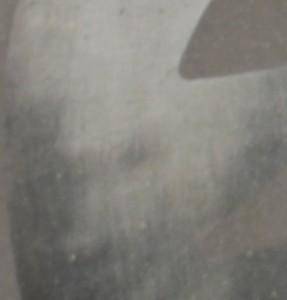
Shiny Surface
In order to achieve the glossy surface you see here, the pottery is first burnished with a stone to a high polish. This occurs before the piece dries completely, prior to firing. There is no glaze used in this process. Maria is admired for the mirror-like surface she could achieve using a stone to burnish the clay.

Matte Black
Designs are painted onto the polished surface of the piece with a fine clay slip, creating matte areas that contrast the shiny surface. Julian used the same clay that was used to make the plate to paint the matte design.
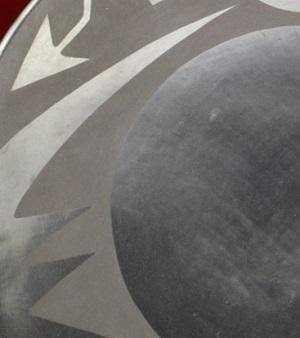
Form
Maria made all of her pottery by hand, without the aid of a potter’s wheel. To smooth and shape pottery she used a scraper made out of a gourd. The smooth forms and shiny surfaces that she could achieve by hand are a testament to her incredible skill as a potter.
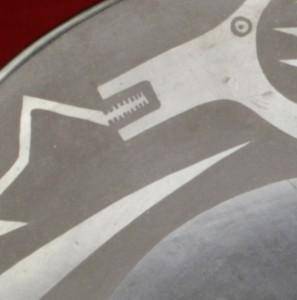
Serpent Design
Julian painted the avanyu design on many of the couple’s pieces.
Funding for object education resources provided by a grant from the Morgridge Family Foundation. Additional funding provided by the William Randolph Hearst Endowment for Education Programs, and Xcel Energy Foundation. We thank our colleagues at the University of Denver Morgridge College of Education.
The images on this page are intended for classroom use only and may not be reproduced for other reasons without the permission of the Denver Art Museum. This object may not currently be on display at the museum.
